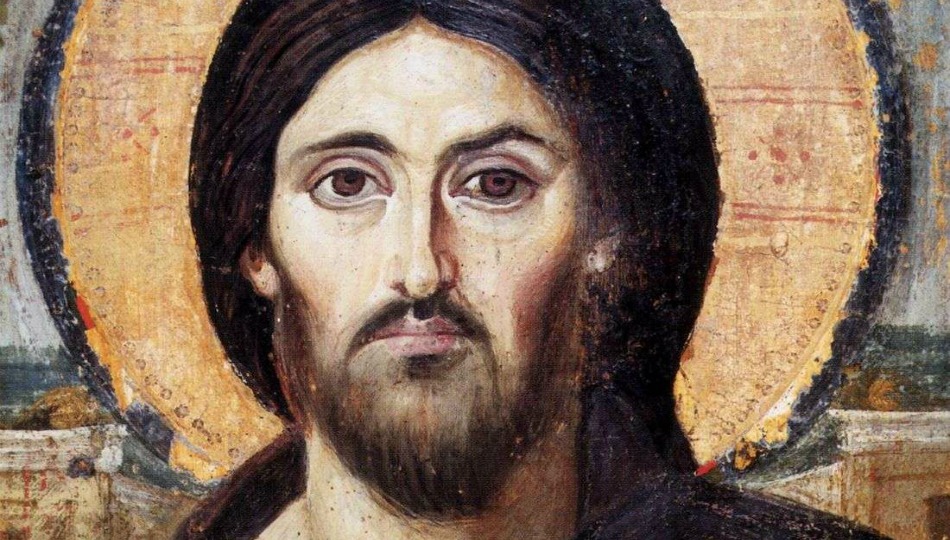

The Invisible Made Visible
Emilie Callan
Monday, October 9, 2017

“When faith… encounters art, it creates a profound harmony because each can and wishes to speak of God, making the Invisible visible” (Pope Benedict XVI, General Audience, 18 November 2009)
Have you ever looked at a work of art (a painting let’s say of a landscape) and, remembering the wonder of creation, be stirred into contemplation? Or gazed upon religious art and stand in awe of its beauty and even the beauty of its subject? But have you ever thought of intentionally praying with art?
Icons have precisely that purpose, of directing our eyes towards God’s eternal presence. But icons are more than works of artistic talent. They aren’t meant to simply be looked upon and admired as you would a painting in an art gallery. Those who gifted us with the tradition of iconography – the Orthodox Church – would be appalled at that idea. Rather an icon is designed to lead us in prayer, and more specifically into relation with the subject of the icon.
Made In His Likeness
The word “icon” is used in the Bible, and comes from the Greek word eik?n, meaning image or likeness. We find it in the Old Testament to describe the creation of a divine image or object; in the New Testament, in speaking of Jesus as the Invisible God made visible, or of objects bearing the likeness of another. God was the first iconographer. He created man and woman, in his likeness. In this sense, each human person is an icon. Having also been created and made in his likeness we are a face and a body on which God writes His story. Jesus Christ, then, is the perfect icon. He is the visible image of the Invisible God. However iconography, in the formal sense of applying paint to wood, dates back to the first millennium, and came to us through the Eastern Orthodox Church. For the Orthodox, depicting Christ in art is perfectly acceptable because God Himself chose to be made visible, through the mystery of the incarnation. The most common depictions have been of Jesus Christ, Mary, and the saints. Icons are still part of religious practice in the Orthodox Church today. Ever walk into an Orthodox church? THEY’RE EVERYWHERE.Darkness to Light
An icon is written not painted. They are meant to be “read” just as you would Scripture. Therefore creating an icon is a sacred process. Those writing the icons, the iconographers, prepare themselves through prayer and fasting. Becoming a “successful” iconographer takes years of study. They use set materials. There is a whole language in icon-making, through symbols, composition and colours. It must be faithful to Biblical and human language to be able to “speak” about God faithfully. An icon is written, first of all, onto a prepared piece of wood. For the icon to last it must be a smooth and primed surface. The iconographer is concerned with the unity of each icon. Colours also have meaning. Gold, for example symbolizes uncreated light. White is a sign of fullness, usually associated with the Resurrected or Transfigured Christ. Colours such as yellow, ochre or green represent the earth.Praying with Icons
“There are many times when I cannot pray, when I am too tired to read the gospels, too restless to have spiritual thoughts, too depressed to find words for God, or too exhausted to do anything. But I can still look at these images so intimately connected with the experience of love.” (Henri J.M. Nouwen, Behold the Beauty of the Lord: Praying with Icons)Some describe icons as « theology in colour ». They mean that icons can reveal truths to the heart that the mind alone would not have understood. In order to become present to the icon, we can begin by simply contemplating it, by focusing first on the eyes. You will never see someone’s profile in an icon because that represents absence whereas seeing the full face and body expresses presence. The goal of praying with an icon is to come into communion with its subject. The landscapes and human subjects are not depicted realistically. That’s done on purpose because they are supposed to reflect a reality that transcends nature and articulates the interior life, what the soul looks like in the presence of God. Iconography seeks to focus on the areas of light emerging from areas of darkness, just as God transforms our own places of darkness and sorrow into light and joy. It is through that lens which we can look or pray with an icon. The goal of praying with an icon is to be aware of God’s eternal presence in every moment. He is the one who creates and gives life where life does not yet exist. Icons draw our gaze upon the work that God has done within us.
Related Articles:
<<













